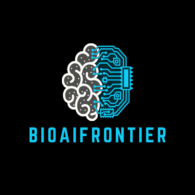As technology advances, so do the risks associated with biological warfare. The idea of weaponizing diseases like malaria to destabilize economies and gain political leverage may seem far-fetched, but it’s a possibility worth exploring. Imagine a scenario where a hostile actor introduces malaria into a country, leading to widespread illness, reduced workforce productivity, and economic isolation. Such an act could allow the attacker to exploit the weakened nation’s resources at discounted prices while the rest of the world avoids the region out of fear.
Here, I’ll explore how AI, cybersecurity, and biochemistry could work together to counter such a threat and protect nations from the devastating consequences of weaponized diseases.
The Hypothetical Scenario: Malaria as a Weapon
Weaponizing malaria would involve the intentional release of infected Anopheles mosquitoes or modifying the malaria parasite (Plasmodium falciparum) to enhance its virulence. The goals of such an act could include:
- Disrupting public health systems.
- Instilling fear and triggering economic isolation.
- Driving down the value of local resources, setting the stage for exploitation.
An attacker might also target vaccine efforts by:
- Hacking and destroying vaccine research.
- Introducing counterfeit vaccines to erode trust.
- Spreading misinformation to create public chaos.
How AI, Cybersecurity, and Biochemistry Could Respond
Fortunately, we have the tools to counter such a hypothetical threat. By leveraging advancements in AI, cybersecurity, and biochemistry, nations can take proactive steps to mitigate the risks.
1. Cybersecurity: Protecting Vaccine Data and Infrastructure
Cybersecurity would be critical in defending against efforts to sabotage vaccine development and distribution:
- Safeguarding Research: AI-enhanced cybersecurity systems can identify and block cyberattacks aimed at stealing or corrupting vaccine research.
- Ensuring Supply Chain Integrity: Blockchain technology can track vaccines from production to distribution, ensuring authenticity and preventing tampering.
- Preventing Physical Sabotage: Real-time monitoring systems can protect vaccine storage facilities and transportation networks.
2. AI: Managing the Crisis and Restoring Trust
Artificial intelligence can play a pivotal role in managing outbreaks and maintaining public confidence:
- Predicting Spread: AI models can analyze environmental data to predict where malaria might spread, allowing targeted interventions.
- Verifying Vaccine Efficacy: AI-powered labs can test vaccine potency and identify potential contamination in real time.
- Fighting Misinformation: AI tools can monitor and counteract false narratives on social media, ensuring accurate information reaches the public.
3. Biochemistry: Accelerating Vaccine Development
Biochemistry offers solutions for rapid response to engineered biological threats:
- RNA-Based Vaccines: Similar to the COVID-19 mRNA vaccines, malaria vaccines could be developed quickly using advanced biochemical techniques.
- Customized Solutions: By analyzing genomic data, scientists could tailor vaccines to specific malaria strains, even if they’ve been modified to become more virulent.
- AI Integration: AI can accelerate research by analyzing biochemical interactions, reducing the time it takes to develop effective treatments.
Collaboration is Key
This scenario highlights the need for interdisciplinary collaboration:
- AI and Biochemistry: Together, they can speed up vaccine development and enhance disease management.
- Cybersecurity and Public Health: Protecting critical medical data and infrastructure is as important as treating the disease itself.
- Global Partnerships: International organizations must work together to prevent the misuse of biological agents and ensure equitable vaccine access.
Case Study: Responding to a Hypothetical Malaria Crisis
Let’s imagine how these tools might work together in a real crisis:
- AI-Driven Outbreak Mapping
AI systems could analyze satellite data, weather patterns, and case reports to predict malaria hotspots, enabling efficient resource allocation. - Vaccine Integrity Verification
AI-powered analysis could test vaccines to ensure safety and effectiveness, while blockchain systems track shipments to prevent tampering. - Cybersecurity for Research Protection
Advanced cybersecurity measures could safeguard sensitive vaccine data and protect critical communication channels. - Countering Propaganda
AI algorithms could identify and debunk misinformation campaigns, while verified information restores public trust.
Preparing for the Worst
While this scenario is hypothetical, it emphasizes the importance of preparation. Here’s how nations can be proactive:
- Invest in Research: Develop AI tools and biochemical solutions for rapid disease response.
- Strengthen Cybersecurity: Build robust systems to protect healthcare data and infrastructure.
- Educate the Public: Combat misinformation by fostering trust in science and technology.
- Collaborate Globally: Coordinate efforts to prevent and respond to biological threats.
Conclusion
The weaponization of malaria is a terrifying thought, but it also showcases the potential of AI, cybersecurity, and biochemistry to create solutions. By investing in these fields and fostering collaboration, we can defend against such threats and build a more resilient world.
The intersection of cybersecurity, AI, and biochemistry offers immense potential to tackle global challenges. Together, these fields provide hope for a future where technology isn’t just a tool for survival but a foundation for thriving in the face of adversity.
